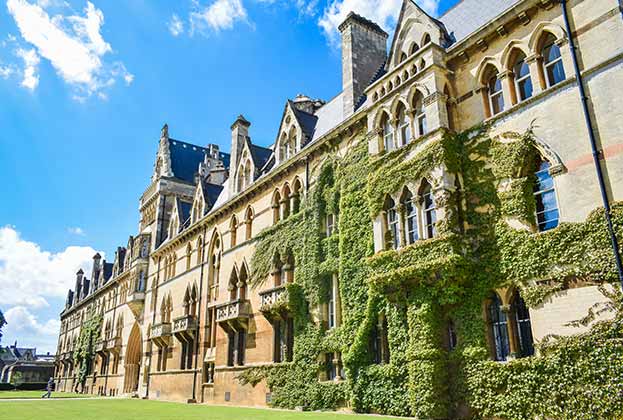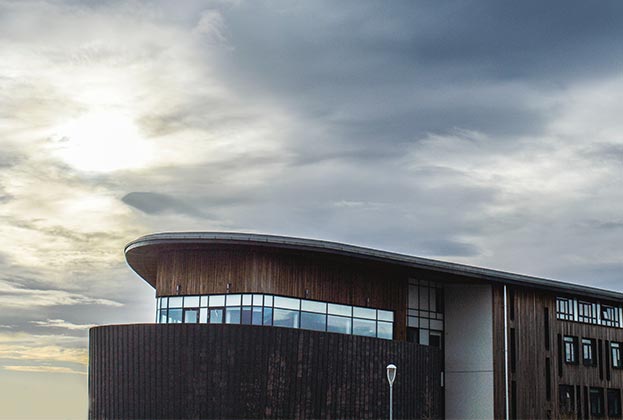Real estate has a major role to play in fulfilling the UN’s Sustainable Development Goals
The combination of rising activism and high profile climate-related events such as the Australian fires has meant that 2019 reached a new peak of concern about the future of the planet. Increasingly searching questions are being asked of all organisations by their stakeholders about how their behaviour will change to mitigate or diminish environmental impacts, and the built environment is very much at the apex of this debate.
The world is 0.8 °C warmer today than it was one hundred years ago, and the warmest decade in history in the UK has occurred since 1990. In May 2019 the UK was the first country to declare a climate emergency, with the government going on to make a legally binding commitment to become carbon neutral by 2050.
Buildings are the third largest carbon emitter in the UK today, even before you include the carbon and other costs of construction. To put this into context Historic England estimates that the carbon footprint of buildings in England exceeds the total emissions of all uses in Scotland and Northern Ireland combined. According to the UK Green Construction Board, when construction, transport of materials and building’s electricity use is combined, the built environment sector creates 42% of the UK’s total greenhouse gas emissions.
However, to date, little effective action has been taken to reduce this, and buildings are not on track to meet the 2050 net zero carbon commitment according to the government’s independent advisory body, the Committee on Climate Change.
Every important social movement of the past half-century has begun on university campuses
Savills Research
Given that every important social movement of the past half-century or so has begun on university campuses, university estates directors will be under ever-increasing pressure to demonstrably lead on this debate.
While the challenge is significant and the pathways to success are diverse, and often rife with conflicting advice, we believe that there are a number of reasons why universities are better placed to deliver solutions than the private sector.
UN Sustainable Development Goals: University estates can play their part in achieving at least seven of the 17

Source: United Nations with Savills annotations
The first of these reasons, and arguably most important, is the fact that the majority of the best research and thought-leadership in this area is coming out of higher education. Private sector developers, building owners and occupiers are struggling to make evidence-based decisions, and academia can help on that front.
Secondly, higher education estates offer the opportunity to test theses in a relatively controlled environment, and we expect to see more universities using individual parts of their estate to test both behavioural and technical solutions.
Thirdly, universities generally tend to own their own estates, and this removes one of the key barriers to change that is prevalent in the private sector. For example, a typical private-sector owner of an office building might choose to build a building that is capable of being operated to the highest environmental standards, yet they have no control over whether the eventual tenant of this space operates that building efficiently and effectively. University estates directors can to a greater degree ensure that their users use the buildings effectively, and we expect to see more universities building environmentally sustainable behaviour into the contract that exists between the institution and its students.
Many universities have an incredibly diverse portfolio of property and land, and this enables them to explore a wider variety of options to achieve net zero
Savills Research
The final reason why we believe that the higher education sector can and will continue to lead the debate around sustainability and the built environment is the diversity of its holdings. Many universities have an incredibly diverse portfolio of property and land, and this enables them to explore a wider variety of solutions. For example, large agricultural holdings not only offer the opportunity to offset carbon emissions from elsewhere on the estate, but also to experiment with re-wilding, carbon sequestration, public access to the countryside and nitrate neutrality.
Of course, being an educational institution also brings its challenges that in some cases are unique to this sector. These include a highly transient population, significant international travel both by students and academics, political pressures on what kind of research is acceptable and fundable, and the sheer cost of the technology that is required to model climatic change. Another theme that we have touched on in previous Higher Education Spotlights is that of the under-occupancy of most educational estates, which while it is not a particular environmental concern if the asset goes completely dark during quiet periods in the academic day, week and year, is still worthy of consideration. For example, is building a property that is only used 50% of the time a sustainable use of materials even if it is not emitting carbon or creating waste when it is not in operation?
While many universities have declared a climate emergency already, there is still a notable tension between achieving climate-related ambitions and maintaining the institution's more normal strategic goals, and we recognise that universities like private sector businesses face many competing demands. Change will be both voluntary and enforced, though the news that the UK’s Office for Students is planning to make voluntary the current mandatory collecting of universities’ estate management records (which include reporting on their carbon emissions) feels like a backward step for great transparency, data-sharing and benchmarking.
We believe that there is a huge opportunity for the higher education sector to lead the climate agenda, and it is clear that this is already happening in terms of debate, research and actions. For example, our analysis the Ministry of Housing, Communities & Local Government data on Energy Performance Certificates (EPCs) for non-domestic buildings shows that a significantly higher proportion of university properties are rated Net Zero or EPC A to C than the norm. Indeed, as the data below shows the majority of university buildings are capable of being operated at the more energy-efficient end of the spectrum. This is clearly a great start, yet also raises questions about behavioural change and whether building new is the best solution…
Read the articles within Spotlight: UK Higher Education below.






.jpg)
.png)

.jpg)